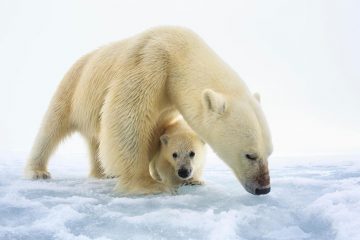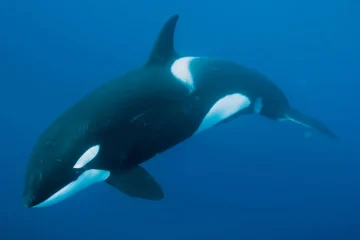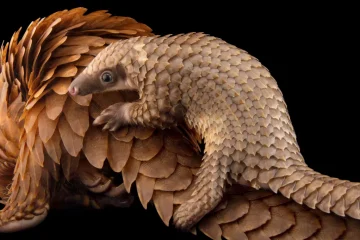“Gorillas are more altruistic in nature”
– Dian Fossey –
Here comes the day dedicated to the biggest, most powerful living primate on earth, and let us say hello to the Gorilla! A population of about 100000- 200000 exists within the wilderness or in other words, they are now quite rare to be spotted. Nature has almost confined these giants within the safety of a broad belt of lowland tropical rainforest. The Congo! Being the second largest and the youngest rainforest in the World, Congo is lush with rich varieties of fauna and flora. But, gorillas themselves add splendid pomp to it. The two Gorilla species in equatorial Africa, Gorilla gorilla & Gorilla beringei, inhabit this coincidently massive rainforest.

-Virunga, Congo basin-
Gorillas are known for their complex social groups, typically consisting of several females and their offspring, led by one dominant adult male known as a ‘silverback’ due to the patch of silver hair on his back and hips. Gorillas, as with all wild animals, occupy a vital niche within their ecosystem, and their presence plays a pivotal role in maintaining the delicate balance of nature. These magnificent creatures are large-scale grazers, predominantly herbivores, and their feeding habits have far-reaching implications for the environment they inhabit. Without gorillas and similar herbivores, the natural equilibrium in the food chain would be disrupted, leading to a cascade of negative consequences. One of the most critical roles that gorillas play is in vegetation control. They are voracious consumers of various plant species, including leaves, stems, and fruits. By continuously foraging on vegetation, they help shape the composition of plant communities. This activity prevents certain plant species from becoming overly dominant and encourages the growth of others. In essence, gorillas contribute to biodiversity by influencing the variety of plants in their habitat. Moreover, the feeding habits of gorillas also aid in seed dispersal. As they consume fruits and then travel throughout their home ranges, the undigested seeds are deposited in new locations. This helps in the regeneration of plant species, maintaining the overall health and diversity of the ecosystem. In this way, gorillas indirectly contribute to the sustainability of their environment.


It’s not just the behemoth size that makes them significant. They are our closest cousins after Chimpanzees & Bonobos, as we share around 98% of our DNA with Gorillas. They share a striking resemblance with us, not only in their physical appearance but also in their social structure and behavior. These groups form tight-knit communities, displaying bonds of kinship and cooperation that mirror our own social structures. However, this remarkable connection is overshadowed by a somber reality – we pose one of the greatest threats to their existence. For decades, human encroachment into the gorilla’s forest habitats in central Africa has steadily diminished their population, leaving just a few of these splendid creatures struggling to survive in the wild.
In fact, due to their dwindling numbers and the imminent danger they face, the mountain gorilla has been classified as critically endangered on the International Union for Conservation of Nature (IUCN) Red List. Disrupting this delicate balance by diminishing or eradicating gorilla populations can have far-reaching consequences. It can negatively impact other wildlife in the area that rely on the same plants for sustenance. For instance, certain insects and herbivores that feed on the same vegetation may face food shortages or population declines if gorilla populations dwindle. This ripple effect can ultimately affect the entire ecosystem.


Gorillas are now under the severe threat of poaching. The fact is, being able to buy Gorilla meat at any time in cities like London. It has taken only 20 years to halve the gorilla population in Congo. Our relentless expansion into their natural habitat has led to habitat destruction, fragmentation, and resource depletion. The very forests that have been their homes for generations are now under siege, and the gorillas find themselves on the brink of extinction.

Furthermore, the well-being of gorillas and their habitats is closely intertwined with the welfare of local communities living in proximity to these precious animals. Ecotourism, which involves socially and environmentally responsible tourist visits, plays a pivotal role in this regard. Carefully guided trips to observe gorillas in their natural habitat can generate significant income for local communities. This income not only supports livelihoods but also incentivizes the protection of gorilla habitats.

However, amidst this disheartening situation, there is a glimmer of hope…
Conservation efforts and awareness campaigns have begun to yield positive results. The population of mountain gorillas in the wild has shown a recent increase, thanks to the dedicated work of conservationists, researchers, and local communities. These efforts involve protecting their habitats, monitoring their health, and implementing strict regulations to limit human interference. It is essential for us to recognize that it is not too late to make a difference and ensure the survival of our mighty cousins. By supporting and strengthening conservation initiatives, respecting their habitats, and spreading awareness about the critical importance of their existence, we can play a crucial role in safeguarding the future of these extraordinary creatures. Gorillas are not just charismatic megafauna; they are essential components of their ecosystems. They serve as a poignant reminder of our responsibility to protect and preserve the biodiversity of our planet, ensuring that these great, glorious, fur-coated apes continue to roam the forests of central Africa for generations to come. So, it is the time to raise awareness, time to be altruistic to our own kind and then to the entire world. Human hands are to be stretched out in terms of conservation but not in selfish exploitation.

Written By:
Siluni Nisandara Abeywickrama Weerasingha,
1st Year Undergraduate,
Molecular Biology Stream,
Faculty of Science,
University of Colombo.
References:
- Mramstead. (2022, January 21). Top 10 facts about mountain gorillas. WWF. https://www.wwf.org.uk/learn/fascinating-facts/gorillas
Image Courtesy:
- Title Image: https://biturl.top/v222Yj
- 1st Content Image: https://biturl.top/JzEbui
- 2nd Content Image: https://biturl.top/3Y7zaq
- 3rd Content Image: https://biturl.top/eUjmAv
- 4th Content Image: https://biturl.top/RvAzu2
- 5th Content Image: https://biturl.top/2YjYrm
- 6th Content Image: https://biturl.top/jAru22



0 Comments